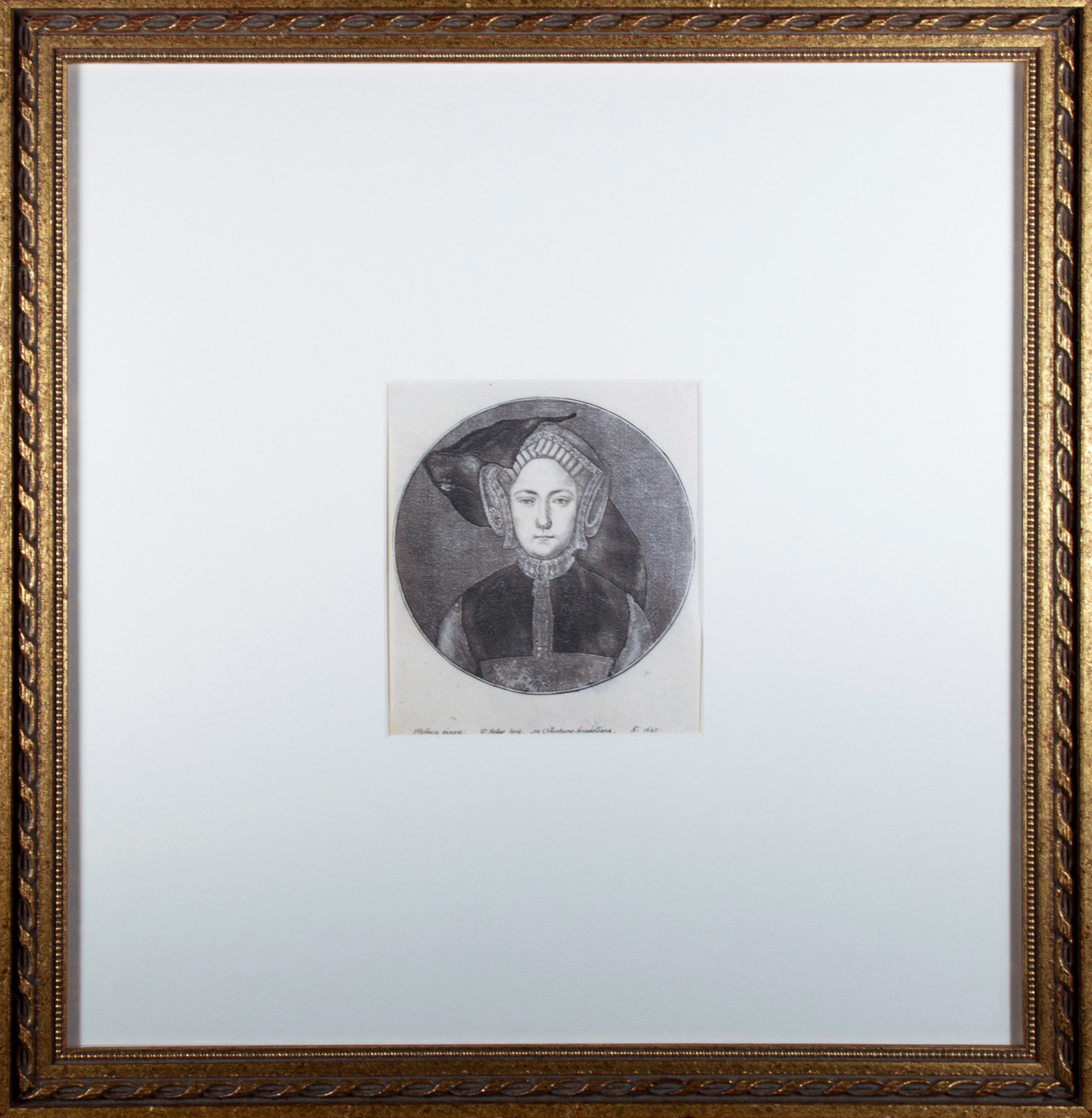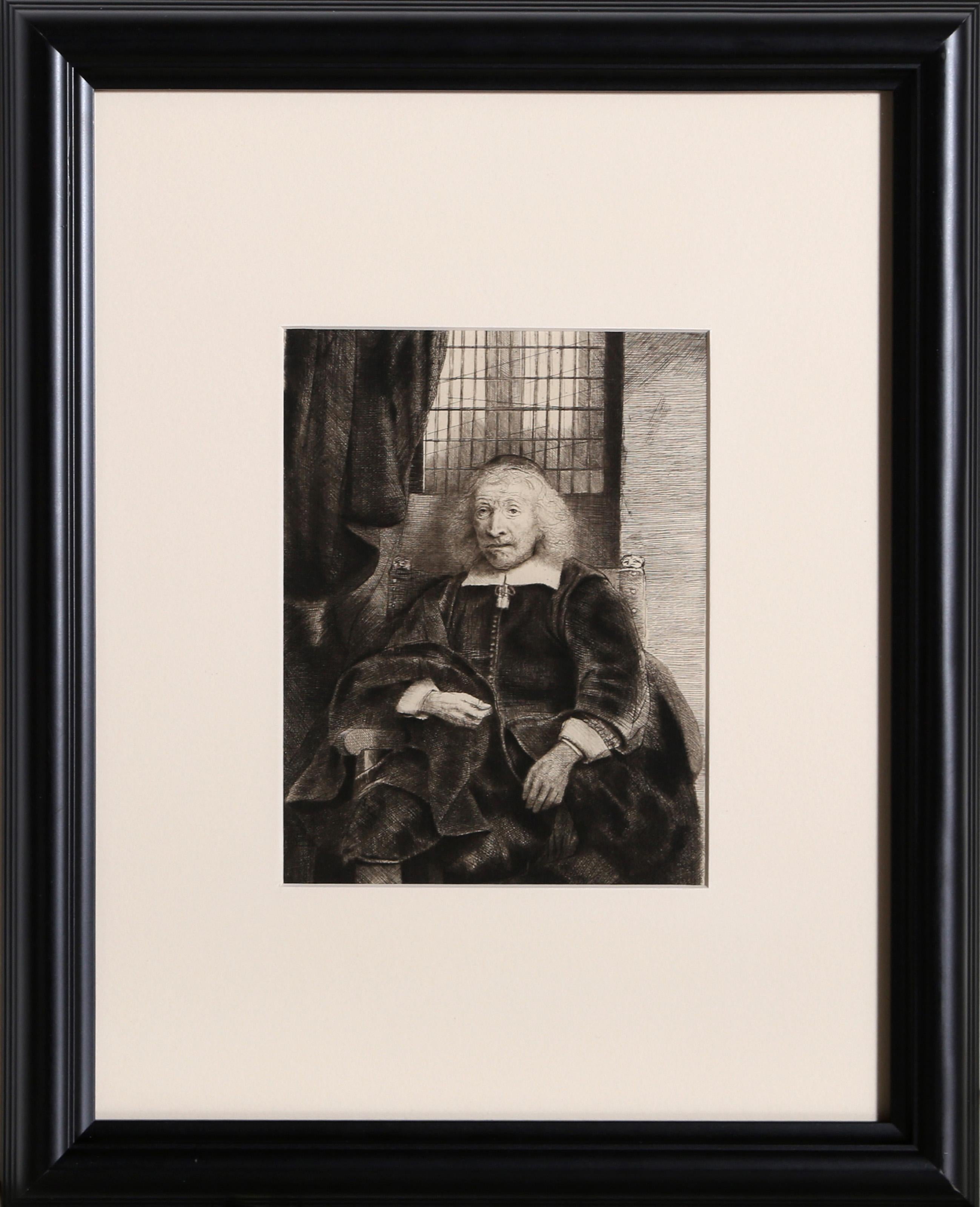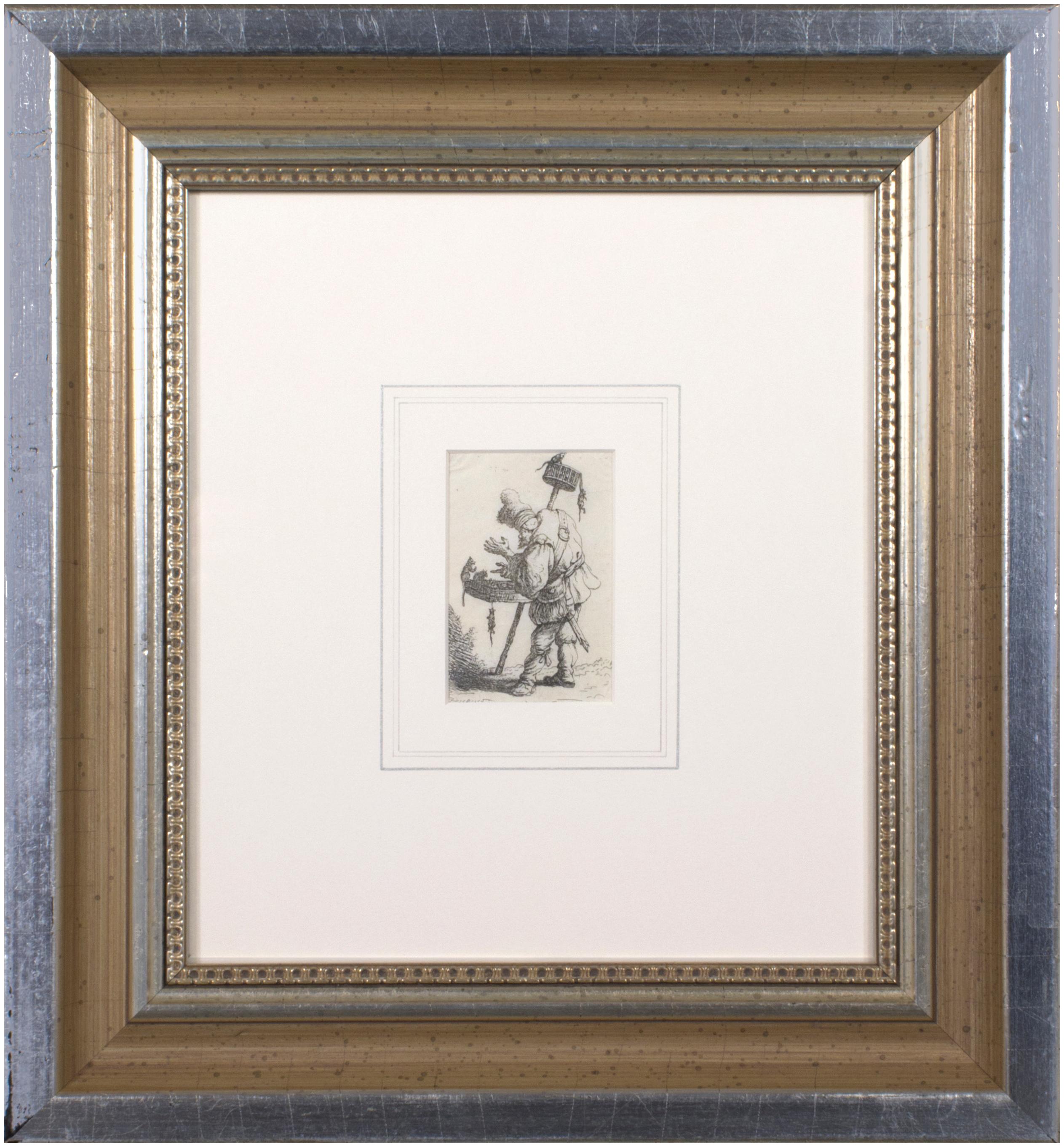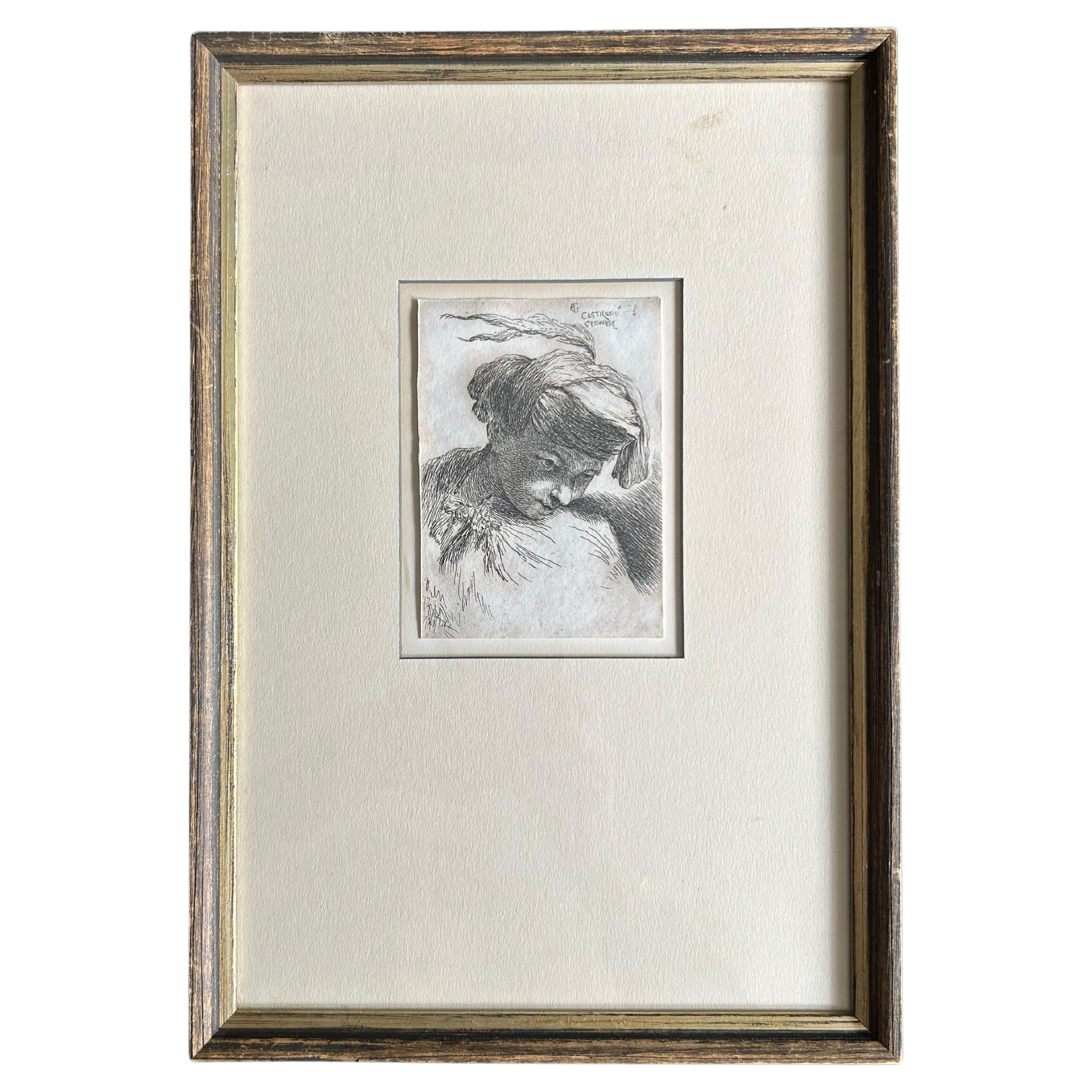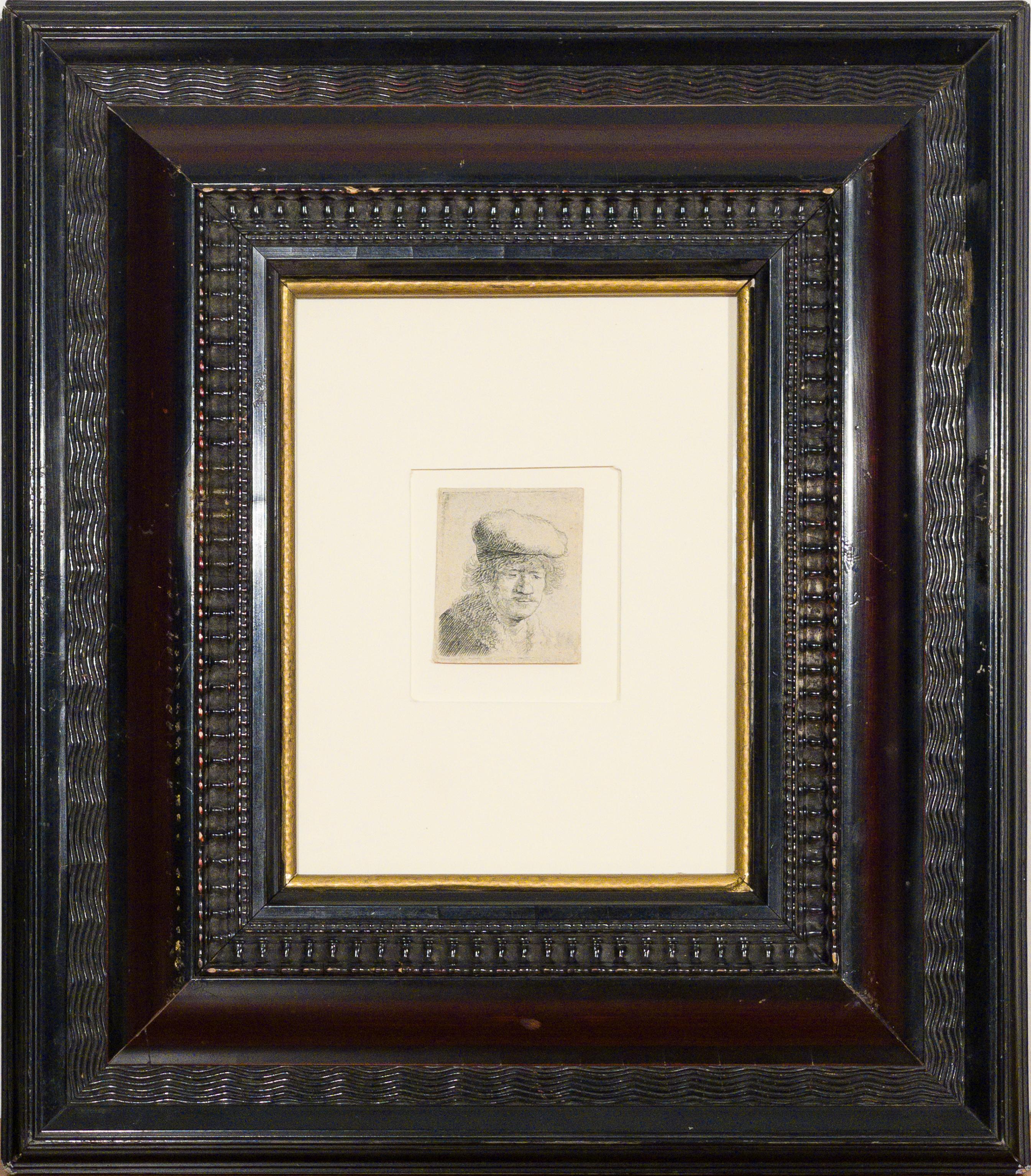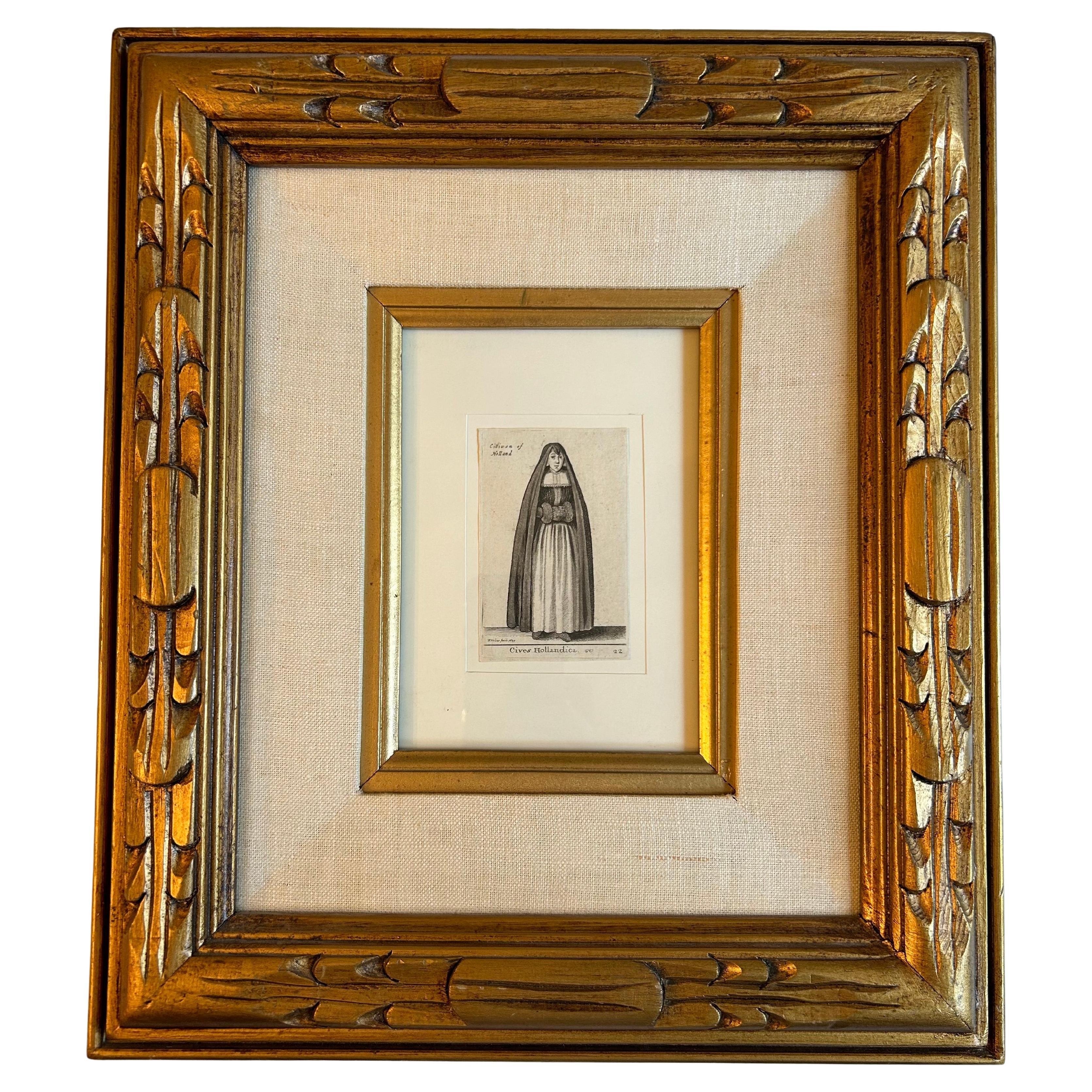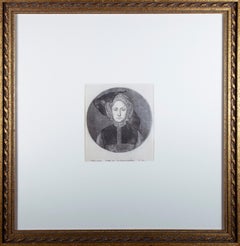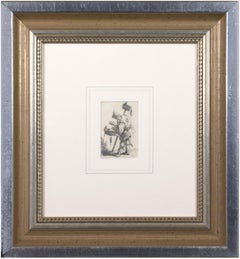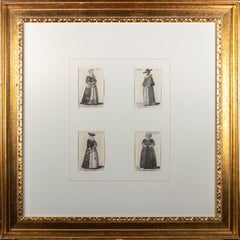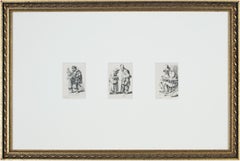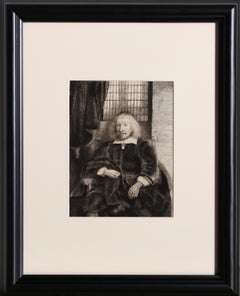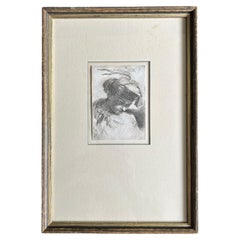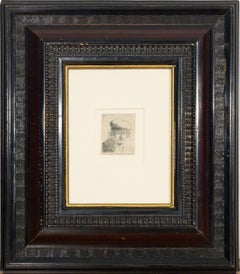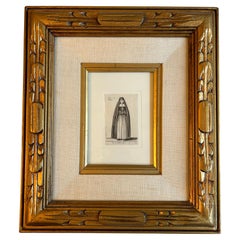Items Similar to 'Portrait of Henrico van der Borcht, ' original W. Hollar engraving after Holbei
Video Loading
Want more images or videos?
Request additional images or videos from the seller
1 of 10
Wenceslaus Hollar'Portrait of Henrico van der Borcht, ' original W. Hollar engraving after Holbeica. 1646
ca. 1646
$1,650
£1,224.36
€1,426.22
CA$2,296.81
A$2,557.71
CHF 1,331.15
MX$31,536.22
NOK 16,953.15
SEK 15,934.32
DKK 10,641.34
Shipping
Retrieving quote...The 1stDibs Promise:
Authenticity Guarantee,
Money-Back Guarantee,
24-Hour Cancellation
About the Item
In this print, Wenceslaus Hollar presents a portrait of D. Henrico van der Borcht, copying a painting or drawing by Hans Holbein. Copying works of famous masters was a common task of printmakers from the sixteenth through the nineteenth century. It allowed a wide audience to become familiar with the work, but it was also a lucrative source of income.
Wenceslaus Von Prachna Hollar was a prolific and accomplished Bohemian graphic artist of the seventeenth century. His work embraced a great variety of subjects, including scenes from the bible, historical pictures, maps, portraits of his chief contemporaries, views of cities, flower and fruit pieces, and various illustrations to books. His clever sketches of costume, his views of old London and other cities are invaluable to the historian. His engravings are executed with much spirit and carefully finished. Having produced more than 3000 different prints during his career, his works can be found in every major museum collection from the Metropolitan Museum of Art to the National Gallery in London.
Hans Holbein the younger was one of the most sought-after artists of the 16th century. He came from northern Europe at the beginning of the Protestant Reformation, emigrating to England where he became the court painter for King Henry VIII. Along with portraits of the king and his court, he also produced miniature portraits that are likewise prized for their sincerity and accurate likeness.
In this image, the young man is shown wearing fashionable clothing, including a ruffled collar and fur-lined coat. Copies of this print are held in the Princeton University Art Museum, the Auckland Art Gallery, the Bristol Museums, the National Gallery of Scotland, as well as in the Royal Collection Trust: the collection of Her Majesty Queen Elizabeth II.
5.13 x 3.37 inches, artwork
15.63 x 13.88 inches, frame
Inscribed 'HHolbein inu,' upper left
Signed in the plate 'WHollar fecit 1646,' upper right
Inscribed 'D. Henrico van der Borcht iuniori. Artis Pictoriae Ania tori maximo, A mico luo dilectis limo hanc tabellam dedicat, Adam Alexiies Bierling Ao 1646,' bottom
Framed to conservation standards using 100 percent rag matting and Conservation Clear glass, housed in a gold gilded frame.
Overall good condition. Some planar distortion to upper left and right corners of artwork.
- Creator:Wenceslaus Hollar (1607 - 1677, Czech)
- Creation Year:ca. 1646
- Dimensions:Height: 15.63 in (39.71 cm)Width: 13.88 in (35.26 cm)
- Medium:
- Movement & Style:
- Period:
- Condition:
- Gallery Location:Milwaukee, WI
- Reference Number:Seller: 7233g1stDibs: LU60536084342
About the Seller
4.9
Platinum Seller
Premium sellers with a 4.7+ rating and 24-hour response times
Established in 1966
1stDibs seller since 2017
434 sales on 1stDibs
Typical response time: 2 hours
- ShippingRetrieving quote...Shipping from: Milwaukee, WI
- Return Policy
Authenticity Guarantee
In the unlikely event there’s an issue with an item’s authenticity, contact us within 1 year for a full refund. DetailsMoney-Back Guarantee
If your item is not as described, is damaged in transit, or does not arrive, contact us within 7 days for a full refund. Details24-Hour Cancellation
You have a 24-hour grace period in which to reconsider your purchase, with no questions asked.Vetted Professional Sellers
Our world-class sellers must adhere to strict standards for service and quality, maintaining the integrity of our listings.Price-Match Guarantee
If you find that a seller listed the same item for a lower price elsewhere, we’ll match it.Trusted Global Delivery
Our best-in-class carrier network provides specialized shipping options worldwide, including custom delivery.More From This Seller
View All'Portrait of a Young Woman' original Hollar engraving after Hans Holbein
By Wenceslaus Hollar
Located in Milwaukee, WI
In this print, Wenceslaus Hollar presents a portrait of an unidentified woman, copying a portrait by Hans Holbein the Younger. The identity of the sitter is a mystery: formerly, the portrait was believed to be of Catherine of Aragon, and the National Portrait Gallery in London identifies her as Queen Mary I...
Category
17th Century Old Masters Portrait Prints
Materials
Engraving
17th century etching black and white figurative character print expressive
By Jan Gillisz van Vliet
Located in Milwaukee, WI
Jan Gillisz van Vliet (1605–1668) was a Dutch Golden Age artist and student of Rembrandt. He worked with Rembrandt between 1628 and 1637, inspired by his master's work. Like Rembrandt, van Vliet made a series of beggar figures, though often with a greater degree of satire and expressiveness. For example, this image of a rat catcher...
Category
1630s Old Masters Figurative Prints
Materials
Etching
Four original etchings of women from 'Aula Veneris' series by Wenceslaus Hollar
By Wenceslaus Hollar
Located in Milwaukee, WI
Presented here as a group are four original etchings of women in European national dress from the master printmaker Wenceslaus Hollar's series "Aula V...
Category
17th Century Old Masters Figurative Prints
Materials
Etching, Paper
18th century triptych etching figurative prints small black and white expressive
By Francois Vivares
Located in Milwaukee, WI
François Vivares was known to have produced several copies of images after older masters, such as, in this case, Rembrandt van Rijn. In this set, Vivares reproduces "The Quacksalver" (1635, Bartsch 129), "Beggar man and beggar woman conversing" (1630, Bartsch 164), and "Beggar Seated Warming...
Category
1760s Old Masters Figurative Prints
Materials
Etching
17th century etching baroque portrait male subject hat realistic print
By Giovanni Benedetto Castiglione
Located in Milwaukee, WI
This is an excellent example of the kind of portraiture produced by Castiglione during the early part of the 17th century. In the image, we see the visage of a man with a mustache, wearing a fur-lined hat topped with a feathery decoration. The image is reminiscent of the work of Rembrandt van Rijn, himself known for his portraits in the form of etchings.
4 x 3.5 inches, image
15.25 x 13.25 inches, frame
Inscribed "GC" in the plate, lower left
This impression is from the edition ca. 1825 from the original plate of ca. 1635.
Unlike many Italian artists, Giovanni Benedetto Castiglione was profoundly influenced by foreigners. He first studied with local artists in his native Genoa, absorbing not only Tuscan Mannerism and Caravaggism but also the style of Peter Paul Rubens, who had worked in Genoa. From 1621 Castiglione also worked in Anthony van Dyck's Genoa studio. Early on, he was attracted to Flemish animal...
Category
17th Century Baroque Figurative Prints
Materials
Etching
'The Smoker (Le Fumeur)' original etching by Cornelis-Pietersz Bega
By Cornelis Bega
Located in Milwaukee, WI
'The Smoker (Le Fumeur)' is an original etching by the celebrated Dutch painter and printmaker Cornelis-Pietersz Bega. It presents a genre scene of the type Bega was best known for: Bega's principal subjects were genre representations of taverns, domestic interiors and villages. He depicted nursing mothers, prostitutes, drunks, gamblers and fools such as quack doctors and alchemists. In this case, he shows a man seated on a chair with his foot on a flat stool and holding a smoking pipe. For Bega, this representation was more of a caricature than it was an image of a specific person, and such genre scenes would have held allegorical and symbolic meaning for the seventeenth-century viewer. During the seventeenth century, the Dutch of all levels of society consumed tobacco and alcohol, and these were an important part of the Dutch economy and a major source of wealth. At the same time, however, moralists and ministers sought to curb intoxication: they openly described drinking and smoking as sinful, immoral, and a general threat to one’s reputation. This paradox is reflected in prints such as this, which inherently carry the national pride of the Dutch economy alongside a moral warning in a print that could be just as easily consumed and collected.
2.5 x 2.25 inches, print
12.38 x 10.38 inches, frame
Framed to conservation standards using archival materials including 100 percent rag matting and mounting materials. Housed in a gold finish Spanish-style wood moulding.
Overall good and stable condition; margins cut to plate; some wrinkling in the corners from previous mounting; housed in a new custom frame.
Cornelis Bega was born into prosperous circumstances. His mother, Maria Cornelis, inherited half the estate (gold, silver, paintings, drawings and prints) and all of the red chalk drawings of her father, Cornelis Cornelisz van Haarlem, a renowned Mannerist artist. Bega's father was Pieter Jansz Begijn (d 1648), a gold and silversmith.
Like other family members, Bega was probably Catholic. Houbraken's claim that Bega studied with Adriaen van Ostade is likely to be correct; this was probably before 24 April 1653, when Bega joined Vincent Laurentsz. van der Vinne in Frankfurt for a journey through Germany, Switzerland and France. Bega had returned to Haarlem by 1 September 1654, at which time he joined the Guild of St Luke; he was already a competent draughtsman, as indicated by his first extant dated work, Interior with a Nursing Mother (1652; Frankfurt am Main, Städel. Kstinst.), and by a remarkable double portrait (Amsterdam, Rijksmuseum) drawn by him and Leendert van der Cooghen in 1654.
Bega painted, drew, etched and made counterproofs in a wide variety of materials on different types of small-scale supports. He may have been the first Dutch artist to make monotypes, but this remains controversial. Approximately 160 paintings, 80 drawings and six monotypes by Bega have been catalogued, as well as around 34 etchings.
Bega's principal subjects were genre representations of taverns, domestic interiors and villages. He depicted nursing mothers, prostitutes, drunks, smokers, gamblers and fools such as quack doctors and alchemists. Less common subjects include the ridiculed or pestered woman, as in Two Figures and Mother with a Spirits Bottle (c. 1662; Gouda, Stedel, Museum Catharina Gasthuis) and The Inn (etching), as well as witty satires on traditional scenes of middle-class music-makers, such as the Music Lesson (1663; Paris, Petit Palace).
Bega's early paintings, such as the Weaver's Family (c. 1652; St Petersburg, Hermitage), are freely executed, dark and coarse, recalling the many-figured peasant subjects of van Ostade. Between c. 1660 and 1664 he began to paint genre scenes with fewer figures, which are finely articulated, colourful and psychologically expressive, for example Two Men Singing (1662; Dublin, N.G.). His exquisite, late fijnschilderen ('fine painting') manner, evident in The Alchemist (1663; Malibu, Getty Museum), compares well with that of Gerrit Dou.
As a draughtsman Bega is noted for his single-figure studies, executed mainly in black and white chalk on blue paper or red chalk on white paper. None of the studies, which were drawn naer het leven (from life), seem to relate to a painting or etching. Bega traded drawings or shared models with other artists of the Haarlem school, including van der Cooghen, Gerrit Berckheyde, Dirck Helmbreker and Cornelis Visscher. These artists drew chalk figure studies in a very similar style, characterised by regular and precise parallel shading and well-defined forms; their drawings, especially those of Bega and Berckheyde, have been frequently confused. Unlike the realistic figure studies, Bega's etchings depict interiors with figures or single figures in the manner of van Ostade; the compositions, often with masterful chiaroscuro effects, reflect most closely the paintings of the 1650s.
Bega is likely to have remained in Haarlem, where he paid dues to the Guild in 1661. He probably died from the plague; fees for his expensive funeral at St. Bavo's were paid on 30 August 1664. Among the artists he influenced were Thomas Wijck, Jan Steen, Richard Brakenburg (1650-1702) and Cornelis Dusart. Painters such as R. Oostrzaen ( fl ?1656) and Jacob Toorenvliet...
Category
17th Century Old Masters Figurative Prints
Materials
Paper, Etching
You May Also Like
Haaring Levieux (B274), Old Masters Framed Heliogravure by Rembrandt van Rijn
By Rembrandt van Rijn
Located in Long Island City, NY
Artist: Rembrandt van Rijn, After by Amand Durand, Dutch (1606 - 1669) - Haaring Levieux (B274), Year: 1878 (of original 1655), Medium: Heliogravure, Size: 7.75 x 6 in. (19.69 x 1...
Category
Late 19th Century More Prints
Materials
Etching
Giovanni Benedetto Castiglione, 1609-1664, Young Man, Etching Circa 1640
By Giovanni Benedetto Castiglione
Located in Toronto, CA
This is an original etching by Giovanni Benedetto Castiglione, circa 1640, of a Young Man Looking Down to the Right. It is the only known state and belongs to the series known as 'Studies of Heads in Oriental Headdress'. Signed (in monogram) in the plate in the upper right 'G Castiglione Genovese.'
In a delicate gilt/black frame. Frame dimensions 12.75" by 8.75". Certificate of Authenticity.
In this work, Castiglione offers us an exquisite portrait of a young man. This small etching shows all the hallmarks of Castiglione's style: incredibly detailed etching marks that result in a wonderful play of light and shadow. The angle of the head and the lively floating feather in the young man's hat show us a figure in movement, pausing to look at something the viewer can only guess at. That such a small collection lines and cross-hatchings can evoke so much is a testament to Castiglione's genius.
Giovanni Benedetto Castiglione was an Italian Baroque painter, printmaker and draftsman of the Genoese school. He is best known now for his etchings, and as the inventor of the printmaking technique of monotyping. He was known as Il Grechetto in Italy and in France as Le Benédette.
Castiglione was a brilliant draftsman and pioneered the development of the oil sketch (often using a mixture of mediums) as a finished work.
He is credited with having invented the monotype in 1648, the only printmaking technique to be an Italian invention, making over twenty over the succeeding years. His most popular and influential prints were a series of exotic heads, mostly of vaguely Oriental males, but also of women.
From Bartch/Bellini:
Giovanni Benedetto Castiglione was profoundly influenced by foreigners. He first studied with local artists in his native Genoa, absorbing not only Tuscan Mannerism and Caravaggism but also the style of Peter Paul Rubens, who had worked in Genoa. From 1621, Castiglione also worked in Anthony van Dyck's Genoa studio. Early on, he was attracted to Flemish animal painting. Though he painted portraits, historical pieces and landscapes, Castiglione excelled in rural scenes with animals and influenced Italy's animal painting specialists. By 1634, Castiglione was in Rome, where he remained for about ten years. After returning to Genoa for a time, he worked for the Mantuan court in 1648, which had also employed Rubens. There Castiglione picked up the freedom of touch he saw in Domenico Fetti's paintings. One of the first Italians to appreciate Rembrandt van...
Category
Antique 17th Century Italian Baroque Prints
Materials
Paper
Rembrandt Etching Framed
By Rembrandt van Rijn
Located in New York, NY
Original Self-Portrait Etching by Rembrandt van Rijn (1606-1669)
Etching on paper
2 ⅛ x 1 ¾ inches unframed (5.4102 x 4.445 cm)
14 ⅛ x 12 ½ inches framed (35.8902 x 31.75 cm)
Description:
Rembrandt van Rijn is one of the most celebrated Dutch painters of all time, and rose to prominence in the 17th century for his characteristic use of light and contrast to convey emotion and mood. Much of his artistic practice consisted of history paintings, portraits, and self-portraits, with his rich oil paintings...
Category
17th Century Old Masters Portrait Prints
Materials
Etching
Price Upon Request
Three Etchings of Gentlewomen by Wensceslaus Hollar, 1607-1677
Located in Toronto, CA
A wonderful trio of etchings of gentlewomen by Wenceslau Hollar, who was born in Prague in 1607 and died in London in 1677.
The largest, A Woman of Holland, is inscribed on the upper...
Category
Antique 17th Century English Baroque Prints
Materials
Paper
$937 Sale Price / set
25% Off
Portrait of Man - Original Etching by Thomas Holloway - 1810
By Thomas Holloway
Located in Roma, IT
Portrait of Man is an original etching artwork realized by Thomas Holloway for Johann Caspar Lavater's "Essays on Physiognomy, Designed to Promote the Knowledge and the Love of Manki...
Category
1810s Modern Figurative Prints
Materials
Etching
$270 Sale Price
25% Off
Portrait de Maximilien I, Heliogravure by Lucas van Leyden
By Lucas van Leyden
Located in Long Island City, NY
Artist: Lucas van Leyden, After by Amand Durand, Dutch (1494 - 1533) - Portrait de Maximilien I, Year: 1873, Medium: Heliogravure, Size: 11 x 8 in. (27.94 x 20.32 cm), Printer: Ama...
Category
Late 19th Century More Prints
Materials
Etching
